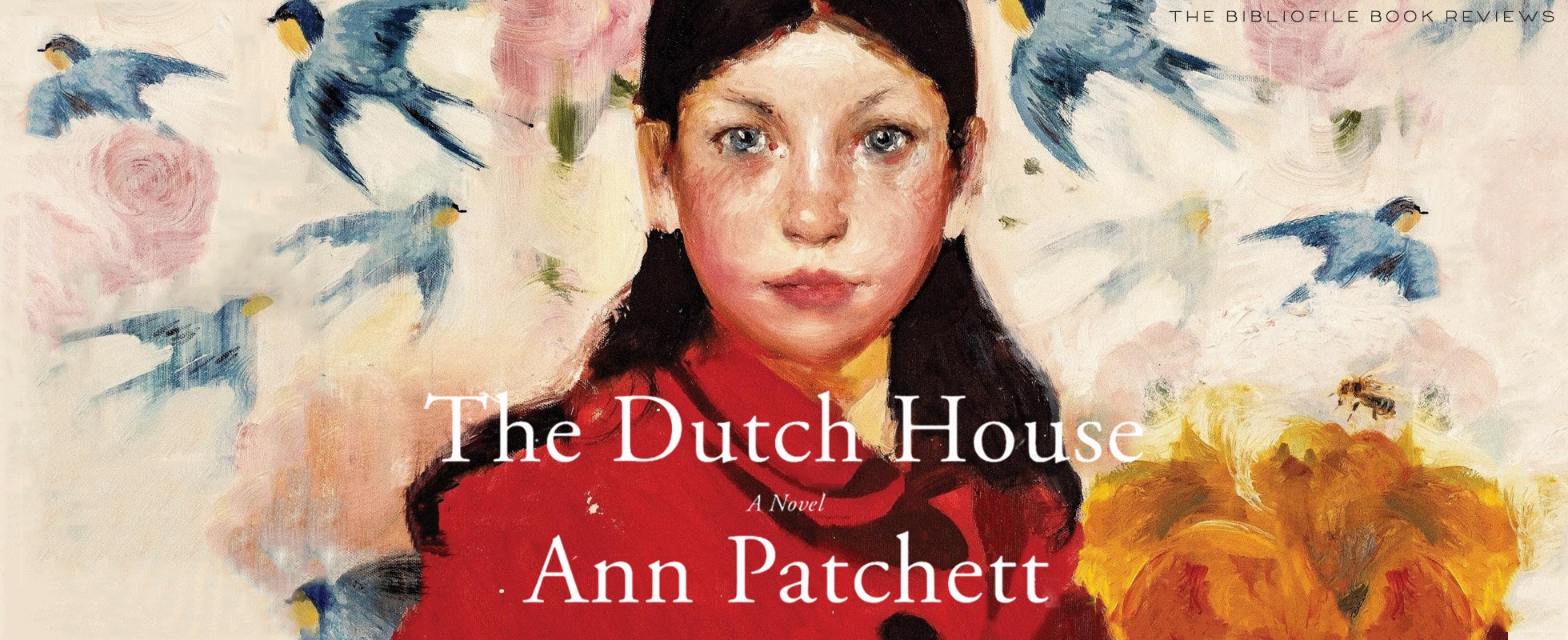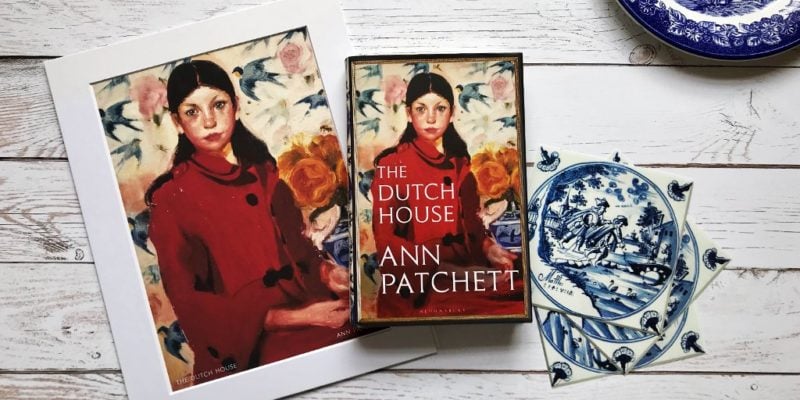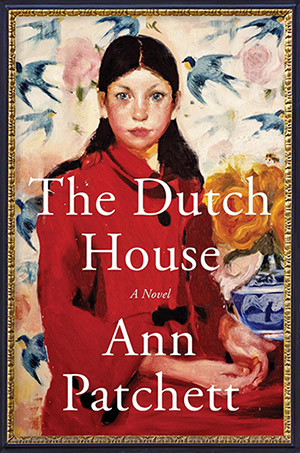Book review, full book summary and synopsis for The Dutch House by Ann Patchett, a family drama about two siblings making sense of their childhood.
Synopsis
In The Dutch House, Maeve and Danny are siblings who grow up in a grand house in Elkins Park. The house is nicknamed The Dutch House, after the wealthy Dutch family that once inhabited it.
Maeve and Danny's mother abandoned their family when they were young, so they are raised by their father and the household help instead. One day, their father brings home a woman, Andrea Smith, who he later marries. Their father is more interested in his real estate holdings than in them, and Maeve and Danny's relationship with Andrea is fractious and later overtly hostile.
The Dutch House follows Maeve and Danny lives over many, many years as they revisit and struggle to make sense of their childhood.
(The Full Plot Summary is also available, below)
Full Plot Summary
Section-by-Section SummarySee the Section-by-Section Summary of The Dutch HouseQuick Plot SummaryIn Part I, Danny and Maeve are raised by their father Cyril. Their mother Elna left when they were younger. They grow up in a grand house, known as the Dutch House. One day, Cyril brings home Andrea, a young, pretty woman with two young girls, Norma and Bright. Cyril and Andrea are indifferent parents. Instead, Maeve helps to take care of the girls and Danny. The household help, Sandy (housekeeper) and Jocelyn (cook), help to raise them as well. Maeve has an adversarial relationship with Andrea. Cyril is also more interested in nurturing Danny than Maeve, since Danny is male and will take over his real estate business someday. Cyril and Andrea marry.
When Cyril dies from a heart attack, Andrea bans both Maeve and Danny from the house, which is now hers along with Cyril's entire business. The only thing Cyril provided for is an educational trust for Danny, but not Maeve. This disrupts Maeve's plans for grad school. Instead, Maeve pushes Danny to pursue an expensive education (medical school), in order to drain the trust and prevent money from reverting to Andrea.
In Part II, Danny is in college now. Maeve still works as a bookkeeper at a grocery store in a nearby town. Danny and Maeve occasionally park outside the Dutch House and spy on Andrea voyeuristically. In college, Danny discovers his genuine interest in real estate and wants to follow in Cyril's footsteps, but lacks the capital to pursue it. Instead, he goes to medical school. When he starts making money as a medical intern, he's able to make his first real estate investments and pursue that instead.
Maeve runs into Fluffy, their former nanny, one day. Fluffy tells Danny that their mother Elna is alive and in town. Fluffy didn't tell Maeve in fear of upsetting her. Fluffy explains how Elna had hated the Dutch House and never felt at ease there. Elna had started disappearing for periods of time, and Cyril finally told Elna not to come back because of how upset Maeve was each time she disappeared.
Danny marries his girlfriend Celeste, and they have two children, May and Kevin. Danny is now quite wealthy. Fluffy becomes their nanny, and Sandy and Jocelyn are a part of their lives, too. Maeve and Danny still stake out the Dutch House, but mostly out of nostalgia. One night after almost being seen by Andrea, they agree it's time to stop visiting.
In Part III, Maeve gets very sick (she has diabetes), so Fluffy reaches out to Elna, who shows up at the hospital. Maeve is delighted, but Danny is resentful. Elna moves in with Maeve. Elna tells them how she had wanted to be a nun before she married Cyril, and that she'd been at the convent the times she disappeared.
One day, Elna suggests visiting Andrea. They (reluctantly) go and discover that Andrea now has a degenerative mental condition and doesn't recognize them. Norma has recently moved back to the Dutch House to take care of Andrea, and Bright is estranged from Andrea. Maeve reclaims a painting of herself that's still there. Elna decides to help take care of Andrea (partially as a penance for abandoning her family). Maeve passes away, and Danny eventually lets go of his resentment against Elna. May and Kevin spend more time at the house, and May falls in love with it.
When Andrea passes away, May asks Norma not to sell it yet. When May becomes rich and famous actress, she buys the house.
For more detail, see the full Section-by-Section Summary.
If this summary was useful to you, please consider supporting this site by leaving a tip ($2, $3, or $5) or joining the Patreon!





I loved the audiobook. It was my first novel by her, and I was impressed by her writing.
Tom Hanks did the audio for the Dutch house and I loved it.
Thanks for your thoughts. I loved Bel Canto but haven’t read anything else by Patchett. I’ll put this one my list and see if I can get to it.
I definitely want to read this book. It’s now shortlisted for the Women’s Prize for Fiction. Although I haven’t read any of Ann Patchett’s other books so perhaps I should start with Bel Canto?
I was confused after finishing this book. It seemed a little too far out the story of the mother that goes to India and comes back… What mother leaves 2 children? I did not care that much for the book. I am sure this book is great for our Book club discussions.
I totally agree! I mean I think some mothers would, but someone who was that concerned about helping others but couldn’t see how her actions would affect her children? It just didn’t sync up with me as a character.
Glad to hear I’m not the only one that thought it seemed like her personality didn’t make a ton of sense. Seemed like her actions were molded to fit the plot as opposed to a real person you could imagine.
I have read some comments detailing disbelief that Elna would leave her Children. Believe it! The guilt and shame for some women who abandon their Children overpower their love. Perhaps returning to their Children seemed like the opposite of love to Elna.
I’ve agreed with most of your reviews, but I thought The Dutch House was an inferior novel, very disappointing work from an author I respect. The house itself may have symbolized love and loss for the siblings, but I just wanted to say “Get over it!” Every childhood has trauma, a not unpleasant stepmother is not a major one in the scheme of things, and (considering how often the average American moves) the loss of a house is just shallow.
I love reading anything Ann Patchett writes and think she is a masterful storyteller. I agree with above reviews about Elna’s character not quite syncing in the story but was able to move past that easily because of the whole of the story.
As someone who experienced 2 stepmothers after the death of my mother as well as the emotional abandonment of my father, this story was very real to me. Childhood trauma can and does follow you for life. Some people grow through it and some it cripples but few can just look in the rear view mirror and say “oh well”.
The book is great! Tom Hanks did a great job as always! I can picture Mads Mikkelsen as the father.